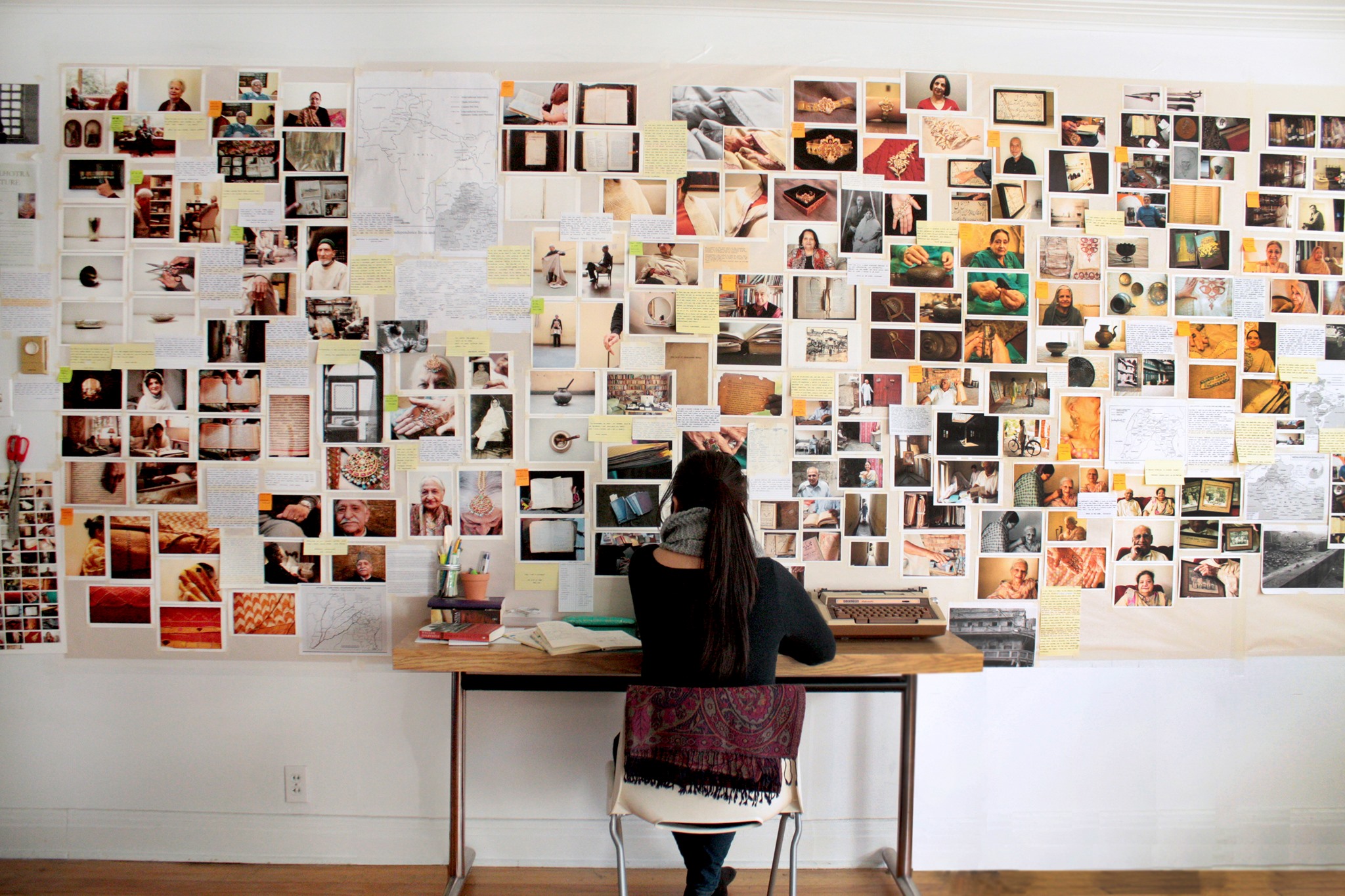Reconnecting history through material memory
The Post Image Cluster, a research centre at Concordia, had the pleasure to present its first speaker in their artist talk series, writer and oral historian Aanchal Malhotra.
Based in New Delhi, Malhotra graduated from the Ontario College of Art & Design (OCAD) with a BFA in Traditional Printmaking and Art History. Then, she graduated from Concordia University with an MFA in Studio Art.
She is the co-founder of the Museum of Material Memory, a digital repository of material culture of the Indian subcontinent, promoting the preservation of material memory through objects of antiquity.
Having enjoyed learning traditional print skills at OCAD, Malhotra decided to enroll at Concordia, as enrolling in grad school seemed like the most natural thing to do.
However, when she arrived at Concordia, she realized that the print program wasn’t as traditional as she had imagined. That was at a time when the program was moving away from the traditional methods of printmaking to digital printing, videos and print installations.
“I was lost for a long time and I didn’t know what to do. I was just drawing a little bit because there was all this talk about research and I didn’t know the meaning of research in art,” said Malhotra.
Malhotra was overwhelmed as she didn’t understand the way that research could be included in visual art.
“Maybe it was just me, but I was resisting the box that I was being put into in my program,” she said. “‘Indian artists should make Indian art’ is what I was being told.”
Malhotra later realized she shouldn’t have felt that way as her work later revolved around India.
“I was resisting moving away from my traditional print media that I spent four years fortifying.”
Malhotra was able to find herself in her work as her art started to speak of her home. She started doing bookwork. More specifically, she made an installation of books she had made with traditional Japanese Washi paper. Her work started to include the skills she gained when she learned how to do paper and screen printing.
“I come from a family of booksellers, so books and readings were always in my blood, but writing was never included,” said Malhotra.
As part of the program requirements, she had to write a thesis. Malhotra didn’t know where to start. She decided to take a sabbatical year and returned to India. During this time, she worked at her family’s book shop, BahriSons Booksellers, which was set up in 1953 by her grandfather.
There, she encountered two objects that her great uncle showed her: These were the objects that his family migrated with during the Indian Partition of 1947.
This was the beginning of her research.
“I felt embarrassed since I was 22 at the time and didn’t know that much about the Partition of India and how it affected … my grandparents.”
The Partition of India occurred in 1947, two years after WWII, when the British withdrew from India after 300 years of occupation, and the land was divided into two independent states. This forced Hindus and Sikhs to the eastside of India and Muslims to westward Pakistan. It is estimated that 14 million people were displaced and one million were killed during that time.
Malhotra went on an intensive journey. From India to Pakistan, and to England, she revisited the Partition through objects that refugees carried with them when they were displaced.
Her book Remnants of a Separation: A History of the Partition through Material Memory, published in 2017, tracks down history through various family stories that people shared with Malhotra. Through interviews, she traces human history.
Malhotra was able to trace human memory through photographs of family members, objects such as jewelry, passports, certificates, and many other materials that people were able to share with her.
A particular object that was odd, but very significant, was the lock to a man’s house that was carried by his family during the Partition.
“People would lock their houses in hopes of returning one day to their home,” said Malhotra.
Her research helped her understand a part of history that she was unaware of. It also allowed her to make connections between her family’s story and other people’s stories.
Malhotra’s work is of great importance as it serves as a remembrance of the past and honours the many unheard voices that lived in through the Partition.
At the moment, Malhotra is writing an oral history on the impact of the Partition.
Photo courtesy of the Milieux Institute for Arts, Culture, and Technology at Concordia.
